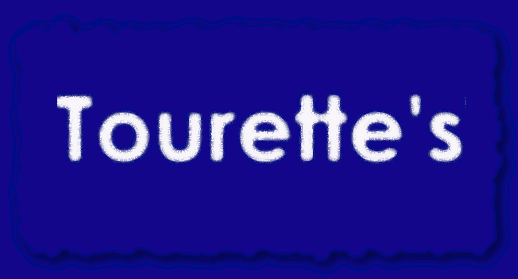Editor & Founder of Conditional Publications, Vrinda Pendred, discusses ‘alternative’ treatments for Tourette’s Syndrome – and her personal experiences with them.
So far in this series on Tourette’s Syndrome, we have discussed:
- What Tourette’s really is, from an insider perspective.
- The causes and triggers of Tourette’s.
- Prescription medication for Tourette’s.
- The use of anti-depressants in treating Tourette’s.
If you missed any of these articles, please click one of the links above to read them.
Today, we will discuss so-called ‘alternative’ methods of treating Tourette’s Syndrome.
Cognitive Behavioural Therapy
Cognitive behavioural therapy (CBT) was devised by psychiatrist Aaron T. Beck in the 1960s as a form of habit-reversal training, typically used to treat depression and anxiety. When it comes to Tourette’s, I want to be clear: CBT will not make your tics go away. However, it can help you monitor them and learn to work with them.
When I was 17, I decided prescription medication was not for me, and I was referred for a 13-month course of CBT with a trained psychologist. In my case, the CBT was intended to treat OCD – and it worked. It was terrifying, at first. I thought I would explode, when my psychologist told me to resist the urges to act the longstanding compulsions that had gradually crippled me. I didn’t believe her assurances that the anxiety would eventually pass; no, restraining myself wouldn’t kill me. But she was right, and at the end of the course, I had practised the strategies long enough to continue on my own. I never thought it possible, but over the years, I got my OCD completely under control. Yes, obsessions and anxieties still strike me. But now I know how to combat them before they take over my life, like they used to.
(If you’re interested in reading more about this subject, please read my previous articles, A DIY Guide to CBT and How to Overcome Obsessive Thoughts – an Insider View).
OCD and Tourette’s are so similar sometimes that it can be hard to tell whether something is a tic or a compulsion. This makes it hard to know if it’s something you can control or something you can’t. For instance, a few months ago, my son took to sniffing his food every time he ate – and then he started sniffing books before he read them, paper before he wrote on it, and…just about every object placed in his hands. The pinnacle was when he pressed his face to our car and sniffed it. His father told him not to do that. Our eleven-year-old son said, ‘I can’t help it. It’s tics.’ His father and I both had to explain to him that no, it’s not. It may feel like a tic, but we could see that it was an obsession that started small and exploded very quickly. The good news, we told him, was that with steady practice, he could stop sniffing everything. But what about the stuff he can’t just stop doing?
When it comes to managing and working with the tics, I think most people with Tourette’s do this instinctively, with time. But I would have had a much easier time as an adolescent if someone knowledgeable had taught me to do this sooner, which is why I have started trying to teach it to our son, who just received his Tourette’s diagnosis earlier this year. (If he were younger, I probably wouldn’t attempt it. It requires a certain degree of self-awareness younger children don’t generally have.)
The first step is to identify your tics. Write out a list of every single one, even ones that seem similar (e.g. straining the muscles in your forearm and straining the muscles in your upper arm would be listed as two separate tics). Then, think of ways you can purposely move with those tics. For example, I sometimes have to strain my neck very hard in both directions. One way of working with that tic might be to do head rolls, which are less stressful on my body and even provide some release through stretching.
Sometimes I have to blink very hard. If it gets bad enough, I close my eyes and take deep breaths until I feel more relaxed and hopefully the urge has settled a little. If I’m in company and feel self-conscious about it, I deliberately look askance at something else, or I look down and scratch the back of my head, so no one sees my eyes squeezing shut. These more natural looking movements ‘mask’ the tics. After practising these masking techniques for more than twenty years, I do them without thinking.
When I meet other people with Tourette’s, I notice them doing the same masking, also unconsciously. It is a way of integrating the tics into your life, rather than fighting against them (something I find just makes the tics worse – the subject of a future article in this series). And if it gets really bad…I go in a private room, shut out the lights (to block out all the excess stimuli that might be exacerbating the tics), put on my iPod (with headphones), turn the volume really loud – and I dance! It’s a great way to let out the energy raging inside.
Physical Exercise and Distraction
On that note, any kind of physical exercise can be great for Tourette’s. Again, it serves as an alternative way of releasing the energy. But also, if it’s a particularly absorbing activity, it acts as a distraction from the tics.
As I mentioned at the start of this series, no one can scientifically explain it, but despite Tourette’s absolutely being a provably uncontrollable neurological disorder, there is a psychological component. When you are intensely focused on something else, you sort of ‘forget’ to tic. Trying to distract yourself on purpose is not easy, but if you stick with it, it works. Find something you love – reading, playing video games, dancing, singing, writing, engaging in sports, whatever – and sink into it. Don’t give up, if it seems impossible. I always find it takes about twenty minutes to absorb myself fully in an activity. And if my environment is distracting, I wear earplugs or listen to familiar, unobtrusive music on headphones, whenever possible.
Meditation and Relaxation
Alternatively, it can help to do something you find deeply relaxing – like going to a spa or having a massage. In fact, regular massages are a wonderful therapy for Tourette’s, because your muscles get so knotted up from the tics that it can leave you frozen with pain. Getting someone to loosen those knots once a week (be it a professional or just a friend or family member) is a great relief, as is regular yoga.
I also find meditation helpful. There are so many guided meditations available, either for purchase or for free online. I personally find them difficult to focus on, so I prefer to go it alone. I found it very hard, at first – and when I say at first, I mean for many years! Then one day, something clicked. I turned out all the lights, after everyone else had gone to bed and the house was silent, and sat by myself in the dark. I crossed my legs and placed my hands on my knees, palm up to ensure they didn’t clench into fists and increase tension. I closed my eyes. And I just sat there – for a very long time.
I focused on the darkness behind my eyes, sinking into that empty space. Eventually, I lost the sensation of my body. I was aware it was there, but I felt disconnected from it, like I was floating outside it. I was vaguely aware of my head flopping onto my chest, at one point, and my back starting to sag backward, but I didn’t feel part of it. I had the choice to fall back into my body at any time – and as long as I stayed out of my body, I didn’t tic.
This isn’t a technique that works for me all the time. Sometimes the tics are just too ferocious and I can’t concentrate on that dark space behind my eyes. At those times, I’d do better dancing around in the dark! But when I get it right, meditation an incredible experience that I highly recommend. With practice, it gets easier and even more enjoyable.
As an aside, I find this practice of stepping outside my body so helpful in falling asleep, when the tics keep me awake. I didn’t learn how to do this on my own, though. It began with lying in bed with my eyes closed while listening to guided hypnosis recordings on my iPod. Sometimes, the tics were so distracting that I had to play the recordings multiple times before they worked. Eventually, I learned to hypnotise myself, in a way. I highly recommend giving it a go, because most people with Tourette’s struggle with insomnia; the consequent exhaustion worsens the tics in the daytime; this leads to further insomnia; and round and round we go.
Closing Thoughts
These are just a few of the ‘alternative’ treatments for those who wish to ease their symptoms of Tourette’s without resorting to prescription medication. Next time, we’ll be looking at some of the more extreme interventions, before we move on to diet and vitamin regimes.
If you found this article useful, please feel free to share it with anyone else you think would benefit from reading it; and be sure to subscribe so you don’t miss the next article.
Finally, if you’d like to read a detailed depiction of what Tourette’s is really like to live with, please read my short story The Passenger, available on Amazon Kindle and the Kindle phone/tablet app. US Readers UK Readers
Until next time….
Vrinda Pendred is a graduate of English with Creative Writing at Brunel University. She completed work experience with Random House and proofread for Mandala Publishing. She is married with two children and lives in Hertfordshire, England, where she does freelance editing and proofreading. She is also a writer, and you can learn more about her personal work here.
Vrinda has five neurological conditions: Tourette’s Syndrome, Obsessive-Compulsive Disorder, ADHD, High-Functioning Autism and bipolar disorder. In 2010, she founded Conditional Publications with the intention of providing a creative outlet for people, and (hopefully) changing a few minds out there about what neurological disorders really are – including not just the limitations, pain or frustration, but also the more positive, beneficial ‘symptoms’ of these strange conditions.
She made three contributions to Conditional Publications’ debut release Check Mates: A Collection of Fiction, Poetry and Artwork about Obsessive-Compulsive Disorder, by People with OCD. Since then, she has released a novel entitled The Ladder, inspired by her personal struggle with bipolar disorder, as well as a number of short stories, and a YA sci-fi /fantasy series called The Wisdom, all available for purchase from Amazon.










